Brief

At a Glance
- At many technology firms, marketing and sales groups might as well live on different planets, with few joint meetings, common dashboards, or pipeline definitions.
- Our new survey shows how integrated pipeline management can help solve these issues.
- Winning organizations are more likely to have weekly pipeline reviews with participation from functions other than sales, notably marketing.
- They’re also more likely use pipeline reviews to restart stalled leads.
Marketing and sales groups at many technology firms are at loggerheads or, at best, an impasse. Executives at one software company, for instance, wonder why more deals in the pipeline are not closing, with sales and marketing teams each blaming the other for shortcomings.
Several factors account for these dysfunctions. Most firms hold few joint marketing-sales meetings, and marketing and sales teams often don’t use the same dashboards or pipeline definitions. That’s the case at another software company, where the marketing team uses its own spreadsheets but cannot access the sales team’s customer relationship management system.
As one group hands off information to the other, misunderstandings can frequently occur as well. When Bain & Company and Google recently surveyed 200 US business-to-business technology buyers, 150 sellers, and 150 marketers, we found that about 20% of the selling organizations do not hand over leads within their main pipeline management platform. Further, marketers often generate leads that the sales staff don’t view as high quality and therefore don’t pursue them.
Some firms even stumble over basic vocabulary. Half of technology organizations, the survey found, lack a common set of funnel stages and applications—which are then inconsistently interpreted across functions, business units, and regions. A sales-qualified lead might be defined differently in each group or consist of different criteria, and teams may also disagree on how to generate or score those leads.
Buyers get smart before the first contact
The age-old marketing-sales divide has only become more exacerbated by the complexity of leads from digital channels. Copious information on the web has spurred far more self-education and self-service among technology buyers, too. Increasingly, they tend to know a great deal about the product and supplier before they make contact, with 94% of prospective buyers fully or somewhat informed before contacting a vendor representative. This makes marketing’s role even more critical—and makes sales even more dependent on marketing. It’s safe to predict that sales teams will find it increasingly difficult to sell on their own without heavy contributions from marketing. Yet the impasse endures.
To deal with the challenges of hitting high growth targets, rather than making existing sellers more productive through smarter collaboration with marketing, many tech firms have responded by hiring more salespeople. But had they spent the next $1 million to tune their marketing-and-sales engine, they’d see better economics.
The pipeline management habits of successful sales leaders
Indeed, pipeline management is one of the common grounds on which organizations can address these issues and lay out useful changes. Our survey shows how winning technology firms operate their pipelines, with winners defined as both growing annual revenues at least 10% and market share by at least 3 percentage points for the past three years.
Winning organizations are more likely than other firms to have weekly pipeline reviews and get more participation from functions other than sales, notably marketing (see Figure 1). In fact, they are 26% more likely to have marketing representatives join and 22% more likely to have sales development representatives (SDRs) join. Reviewing the pipeline together helps both teams share what they’ve learned and improve processes. Frequent joint meetings on account planning and prioritization lead to better outcomes, particularly around account-based marketing.
Winning organizations conduct pipeline reviews more frequently
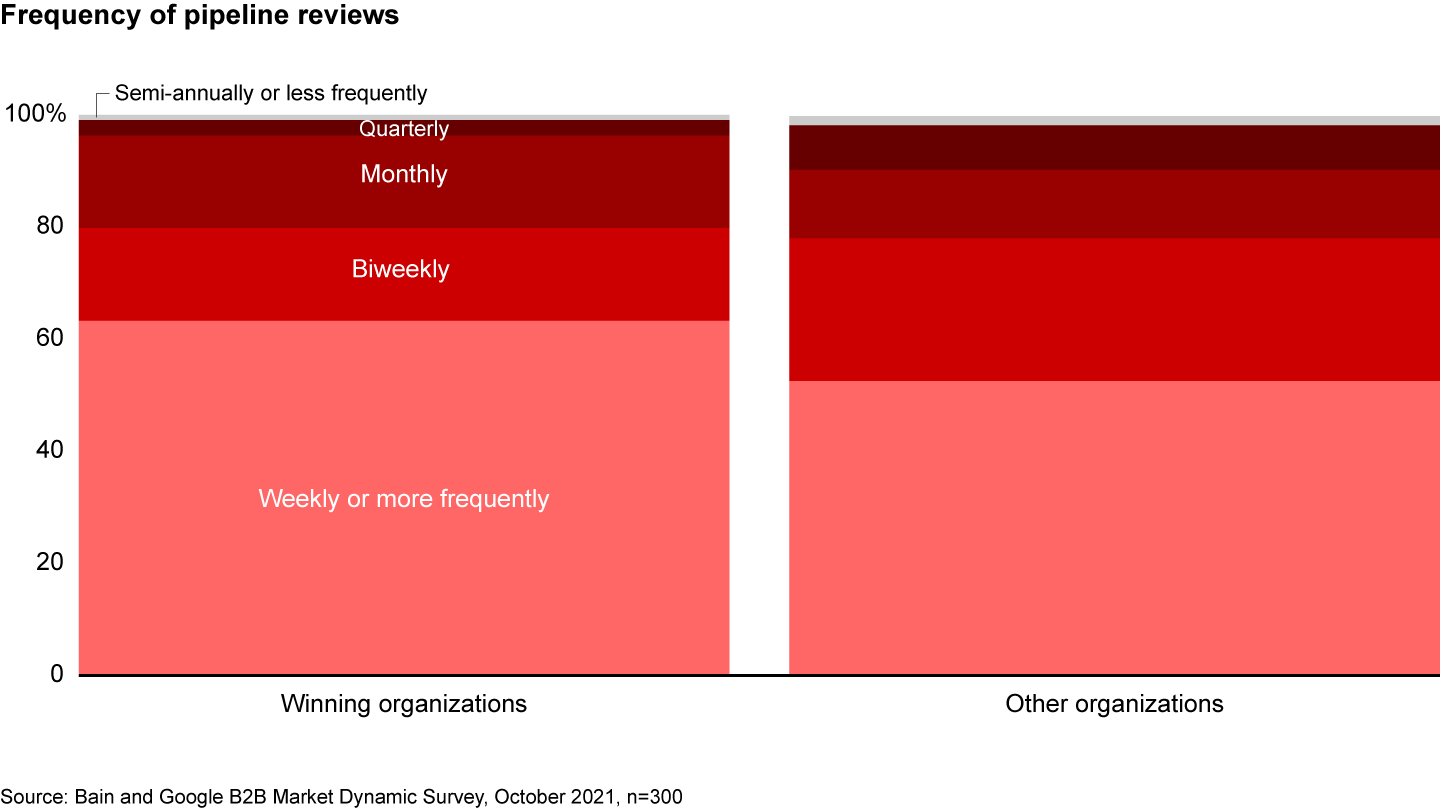
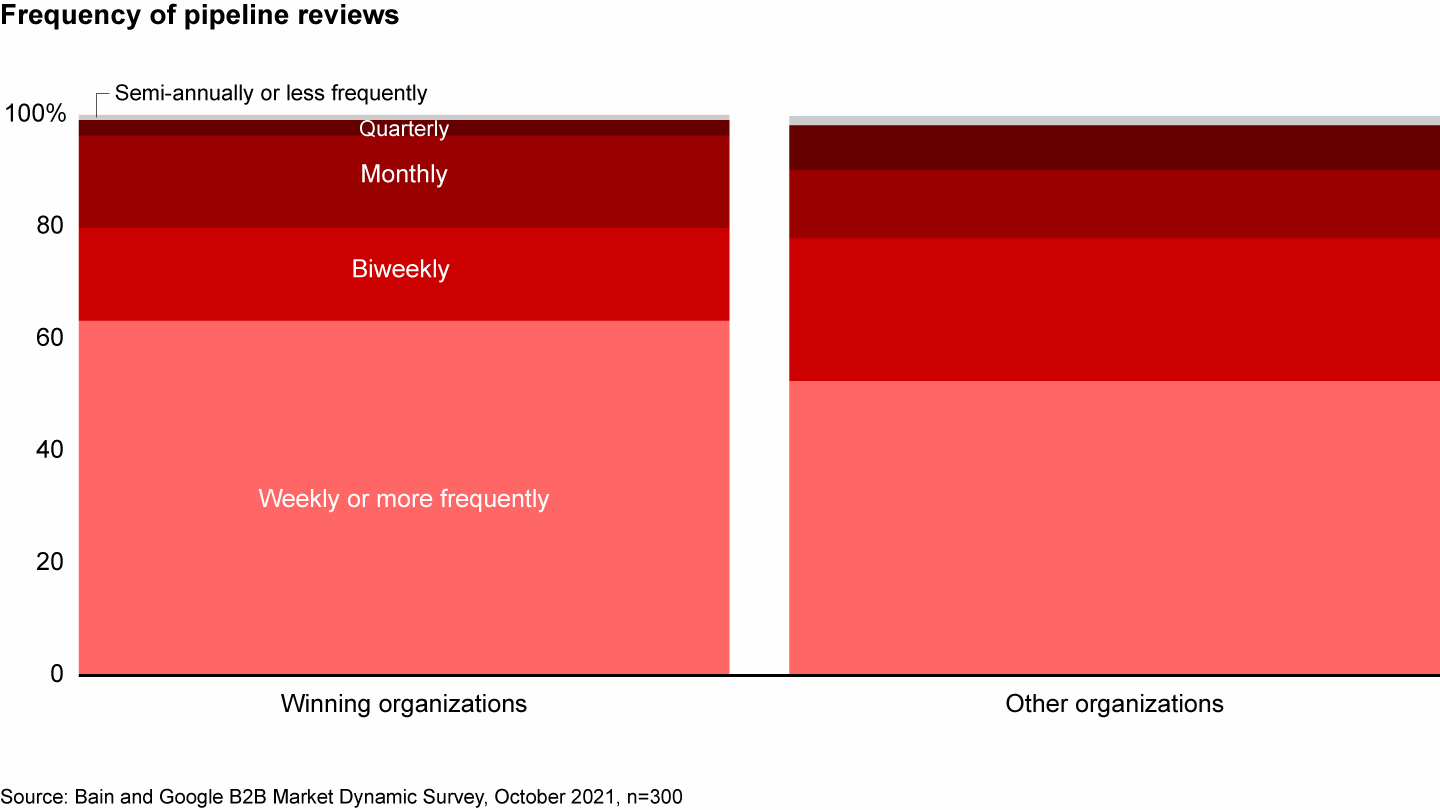
Nurturing new and stalled leads
Coming out of pipeline reviews, winners are more likely to take actions focused on customers and prospects, rather than on internal activities (see Figure 2). Winners are also more likely to engage customers and prospects in new ways, such as with new content. Other marketers, by contrast, are more likely to focus on activities such as reallocating coverage or reprioritizing accounts.
Winning organizations take more customer-facing actions from their pipeline reviews
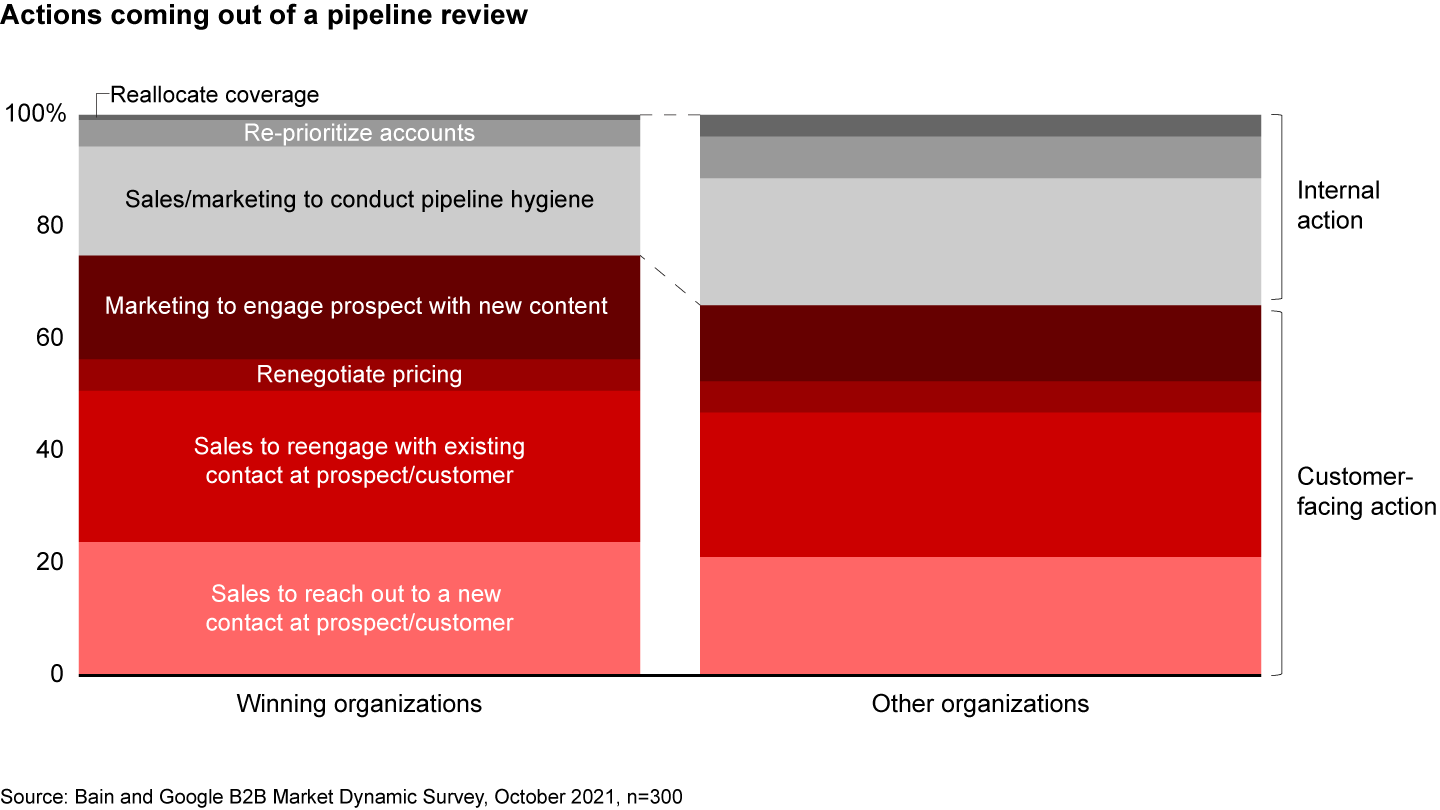
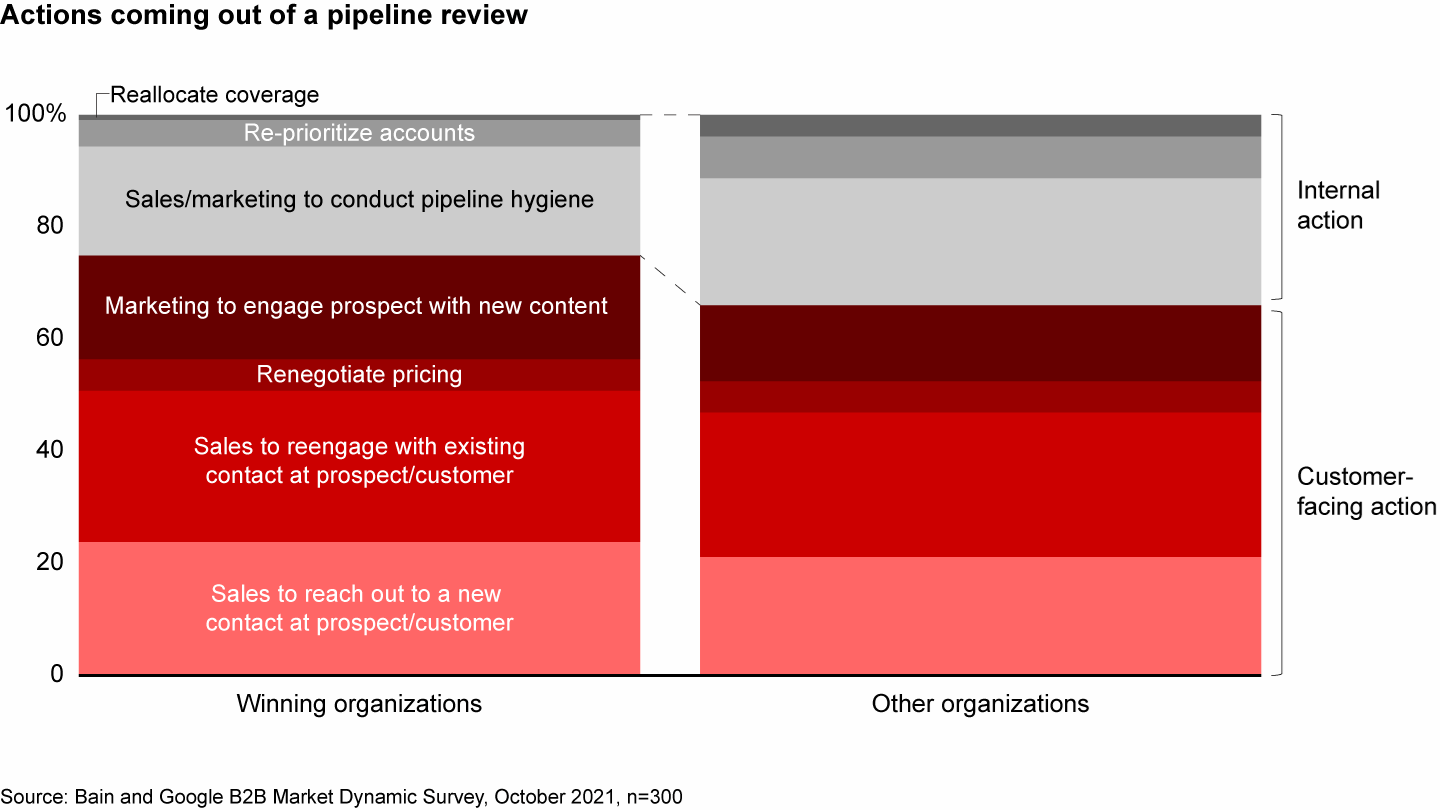
A robust pipeline management system identifies ways to get stalled leads moving again, but we found that only 16% of the tech companies surveyed re-nurture leads within one month after they stalled or were discontinued. And most fall short on data: 59% do not append a reason for discontinuation or loss of a lead and 68% do not append the history of touchpoints. In contrast, winning companies are aggressive about nurturing programs and 13% more likely than others to re-nurture leads in the same quarter, usually allocating SDR time for this purpose (see Figure 3).
Winning organizations re-nurture leads more quickly than other firms
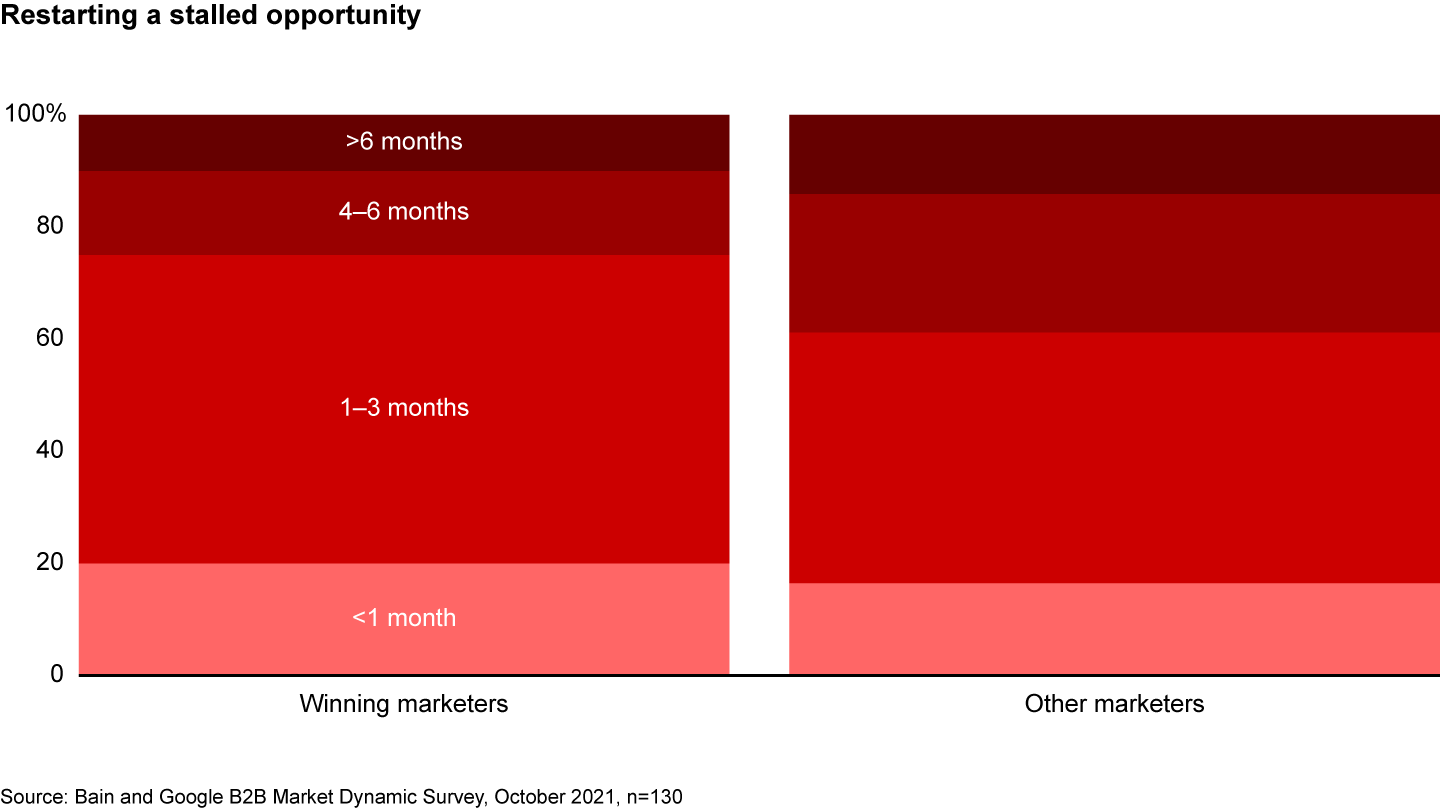
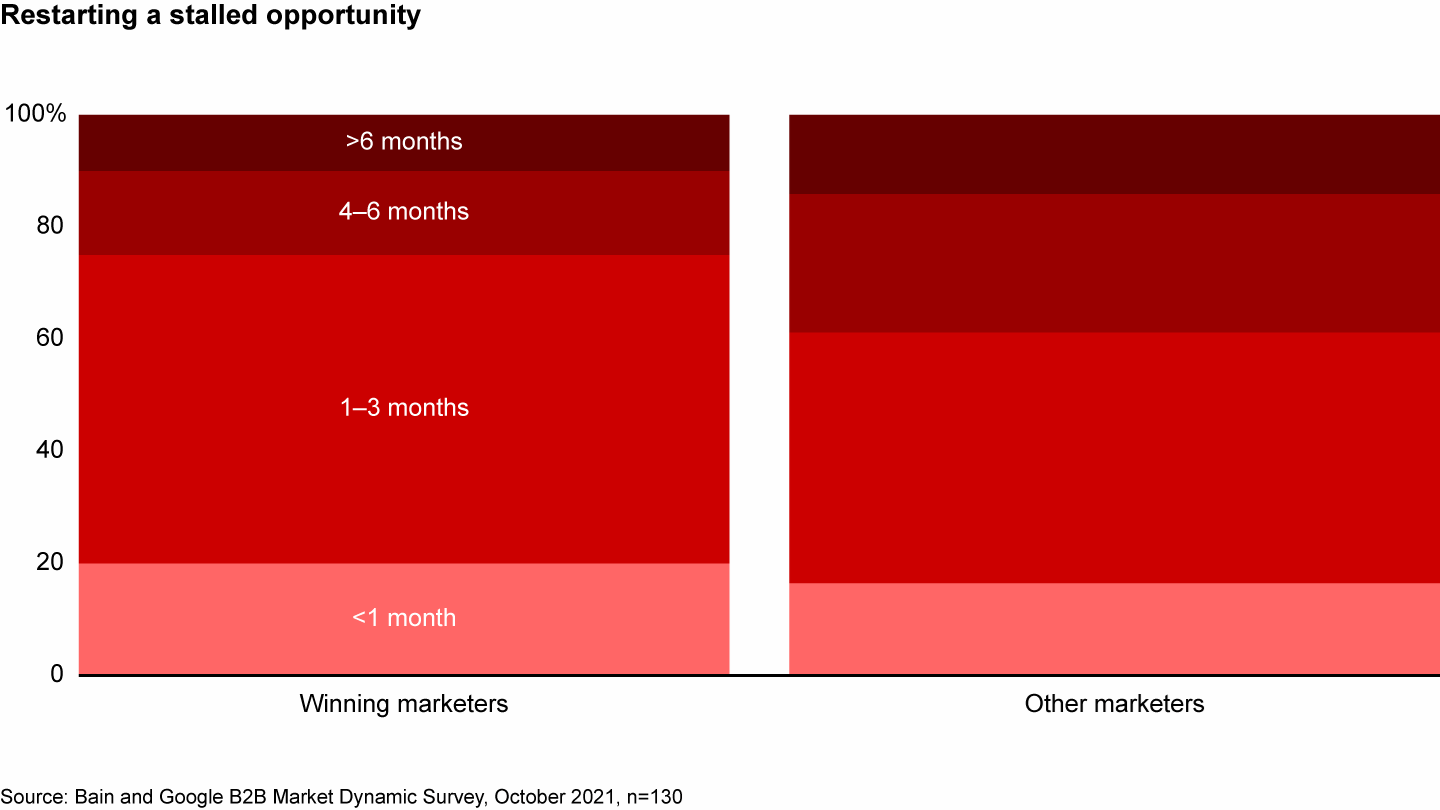
Although SDRs can serve as a critical connection between sales and marketing, there is still work to be done. Overall, only 36% of organizations consider their SDRs to be effective. That splits out as 46% among winning organizations vs. 30% among other organizations that feel their SDRs are effective (see Figure 4). SDRs typically spend time on inbound qualification or outbound prospecting, but winning organizations add a third focus for SDRs: nurturing or re-nurturing leads. In the pipeline review meeting, SDRs can give feedback to marketers about what’s working and what isn’t.
Winning organizations more effectively deploy their sales development representatives
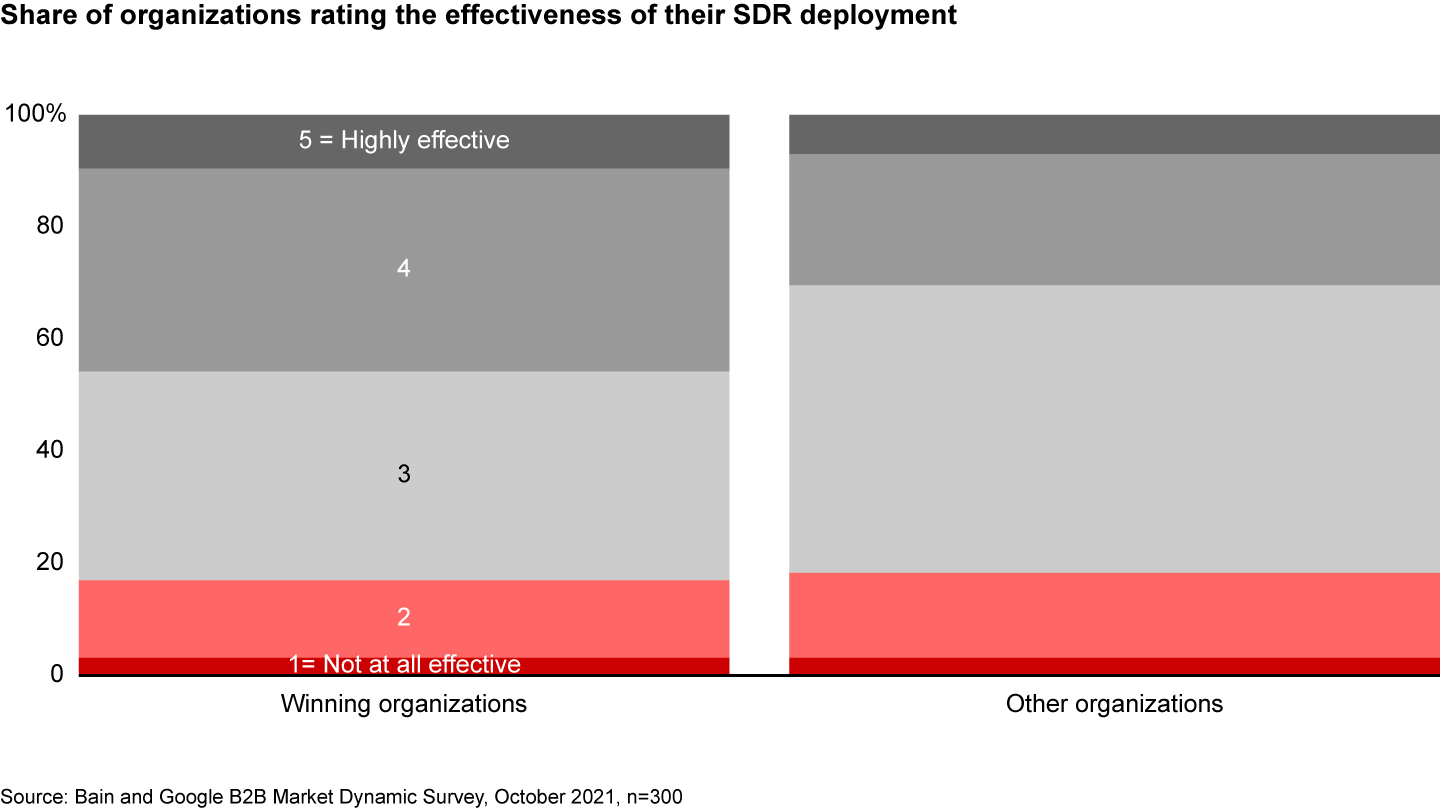
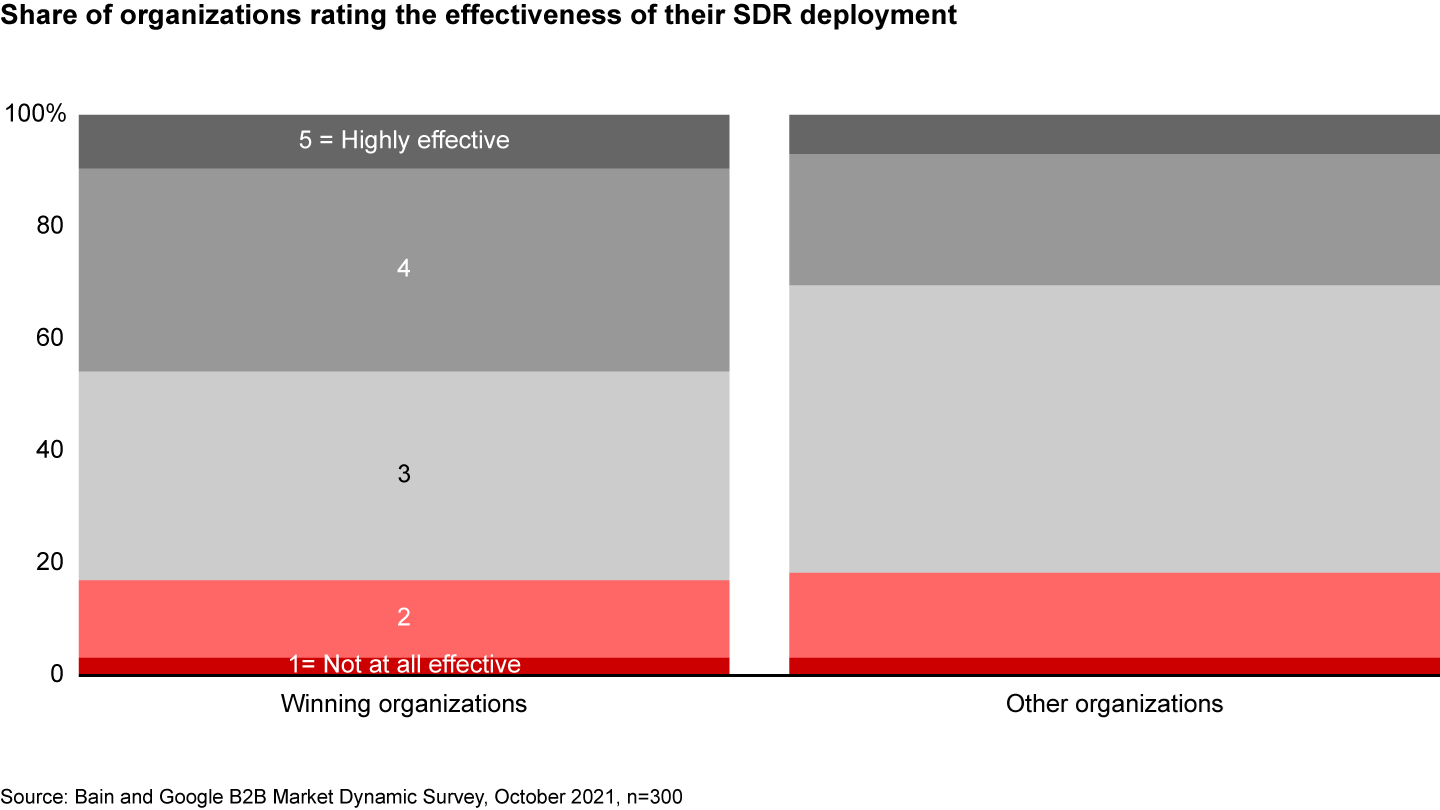
Tech companies cannot afford to have marketing and sales continue to operate in silos; they will only thrive when marketing and sales are tightly linked, but there is hope—the two groups do generally acknowledge the value of the other. Our research shows, for instance, that sales teams would like marketers to play a bigger role from beginning to end, from pre-funnel awareness to tailoring content in renewal to helping re-nurture stalled leads. Marketers could also step up efforts to provide deep customer intelligence, including segment profiles and propensity to purchase.
Executives can further tighten their marketing-sales collaboration by answering some high-gain questions, such as, do they:
- target customers from the same customer database?
- deliver the same clear messaging across channels?
- agree on lead and pipeline stages, scoring methodology, and definition of which leads go to SDRs and sales?
- meet regularly to discuss pipeline process, progression, and next steps?
- clearly understand the other team’s focus?
- have one integrated sales and marketing stack with minimum duplication and high adoption?
- make budgeting and resource trade-offs between groups to maximize growth?
With the pandemic accelerating digital education among buyers and the need for tech suppliers to make salespeople increasingly productive, taking a one-team approach to pipeline management proves far more effective than a divided house.

How to Fix the Sales-Marketing Disconnect
In this Sunny Side Up podcast, Bain Partner Saber Sherrard offers specific steps companies can take to help sales and marketing align.